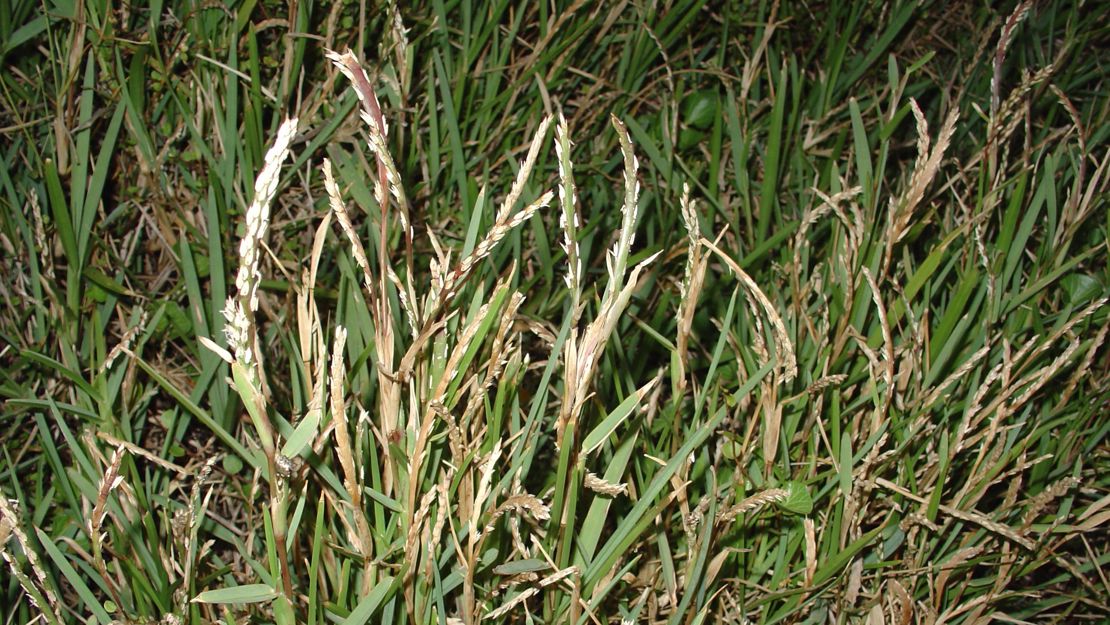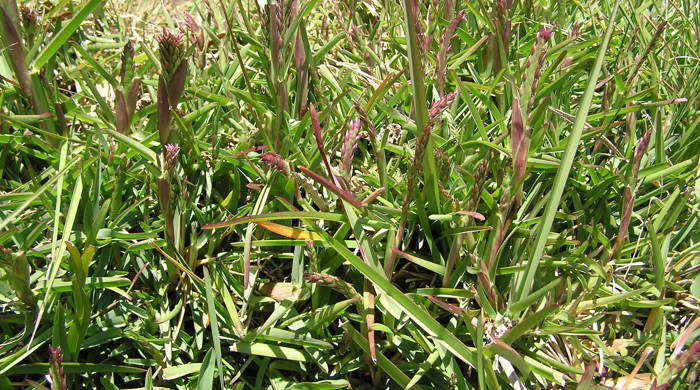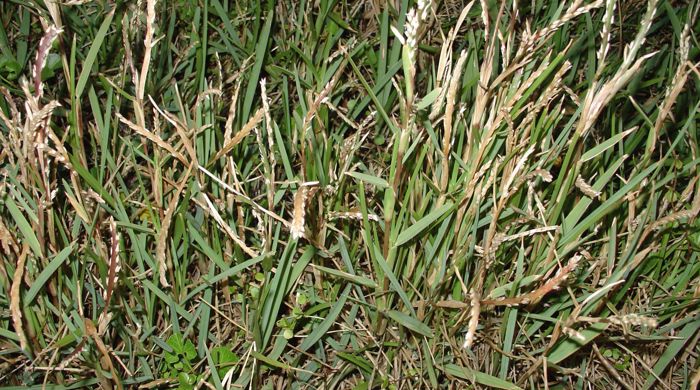Stenotaphrum secundatum
Buffalo grass
Family: Poaceae
Origin: Africa, North and South America

Regional Pest Management Plan (RPMP) status
- Not a legally declared pest
General description
Dense, mat-forming perennial grass. Stolons are stout and creeping. Leaves are < 10 x 1.2 cm, flattened and alternate with rounded tips. Seed head is distinctively flattened with a row of seeds down each side.
What you need to know
Although buffalo grass is not a legally declared pest plant, it may still be invasive in some situations. Consider lower risk alternatives for your garden, such as native plants.
Habitats
Coastal areas, dunes, riparian and forest margins, pasture, roadsides.
Dispersal
Seeds dispersed by wind, water and attachment to animal pelts. Vegetative spread from stolon fragments. Human-mediated dispersal through dumping of garden waste and movement of contaminated vehicles.
Impact on environment
Smothers native vegetation and suppresses seedling recruitment.
Control
Site management
Follow up treated areas 3 times per year. Encourage natural regeneration of native plants or replant treated areas where possible after 2-3 treatments to establish dense ground cover and minimise reinvasion.
Recommended approaches
Physical control
Method: Dig out.
Plant parts requiring disposal: Seeds.
Disposal options: Remove to greenwaste or landfill if practical.
Biocontrol
Biocontrol is currently not available for this species.
Community agrichemical control recommendations
No qualifications: Foliar spray with 150ml glyphosate green per 10L of water.
Certified Handler/Experienced agrichemical user: Foliar spray with 150ml glyphosate green per 10L of water and 20ml penetrant.
For infestations amongst desirable broadleaf species, foliar spray with 60ml haloxyfop-P-methyl per 10L of water.
Caution: When using any herbicide or pesticide please read the label thoroughly to ensure that all instructions and safety requirements are followed.





